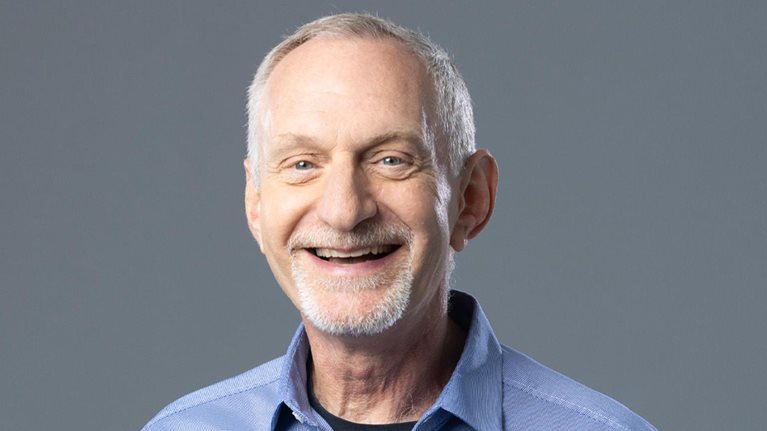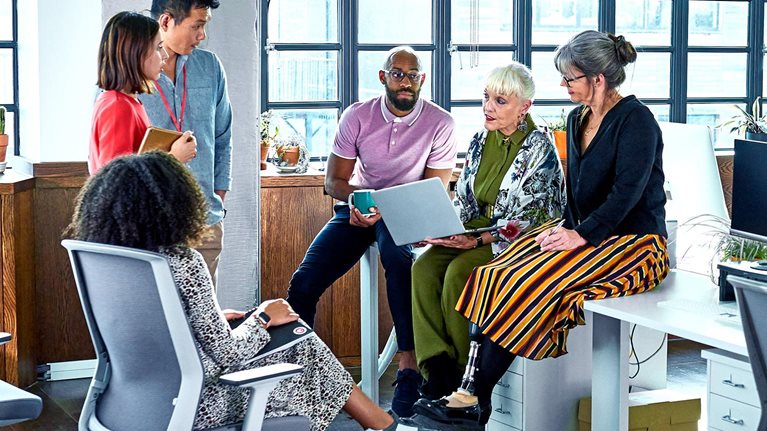Around the world, a meaningful share of adults aged 55 and older—about 20 to 25 percent—say they want to work but aren’t doing so, according to a recent survey by the McKinsey Health Institute (MHI). Respondents cited difficulty landing a job and a lack of attractive opportunities as the greatest barriers to employment.
Recent AARP research also notes the desire of many older adults to stay in the workforce—and not just for the paycheck, says Jo Ann Jenkins, chief executive officer of AARP.
“Perhaps even more important than pay, people of all ages want flexibility” from their employers, Jenkins says. That includes older workers who still have a lot to contribute to the bottom line as companies seek to address gap shortages in the labor force in the United States and globally.
AARP is the nation’s largest not-for-profit, nonpartisan organization dedicated to empowering Americans 50 years and older to choose how they live as they age. The organization also provides thought leadership and partnership to a global collaborative that collects and shares best practices for attracting and retaining an age-diverse workforce.
As part of MHI’s Conversations on Health series, Jenkins sat down with MHI partner Ellen Feehan to discuss AARP’s global work and other efforts to communicate the value of older adults in the workplace, as volunteers, and in the community.
The following is an edited version of their conversation.
Ellen Feehan: The McKinsey Health Institute recently completed a global healthy aging survey that shows a significant desire for, and benefit to, societal participation as we age—whether it’s working, volunteering, learning, or being active in the community. AARP has done a lot of research on loneliness and isolation among older adults. What have you learned about the importance of societal participation and people having purpose as they age?
Jo Ann Jenkins: One of the most important things we’ve learned is that people want to live longer, and they also want to live healthier. I think that’s important for how we redesign our life course and take care of ourselves so that we can continue to be more engaged and happier in the work we do, whether in a traditional workplace or just in the way we live our personal lives at home and with our family and friends.
COVID-19 also brought to the forefront how important our personal health is, and how important it is for the way we want to continue to live our lives—hopefully well into our 70s, 80s, 90s, and beyond. And I know it’s important for us to stay active, whether in work or through volunteerism. All those things help contribute to us living healthier, longer lives. It’s so important, particularly as we try to make the business case for healthy aging.
Ellen Feehan: What is your thinking around the business case for healthy longevity?
Jo Ann Jenkins: With talent being so competitive in the US and globally, employers like us are constantly looking to recruit and retain talent. What an ideal opportunity for older, experienced workers to help fill that talent gap. It’s an important factor for employers to consider as they’re looking at shortages in the labor force, whether it be in healthcare, education, or technology.
At AARP and with our global partners—the World Economic Forum and the Organisation for Economic Co-operation and Development [OECD]—we’re trying to make the business case for healthy longevity and showcase the role of employers in empowering us all to live healthier, longer lives.
Ellen Feehan: As the leader of such a large organization, how do you see the role of employers and your own role as an employer in the health and well-being of employees?
Jo Ann Jenkins: One of the things I continue to hear from other CEOs around the globe is the importance of keeping employees happy and engaged. Obviously, pay is important. But in some cases, flexibility and the benefits package you put together are even more important.
In our case, not only do we have a retirement savings plan and a 401(k), but also we have programs like paid leave for caregiving. It’s also important to give employees flexibility in terms of their work schedule. Across the board at AARP, we work at home in a hybrid workforce on Mondays and Fridays. Then we come together on Tuesdays, Wednesdays, and Thursdays for intentional meetings and focus. That’s gotten a lot of support from our employees. Our lives changed as a result of COVID-19. Our offices aren’t just in the workplace. Sometimes our offices are at home or in our car. Technology has allowed us to have that kind of flexibility, and those things are now standard practices for many companies trying to have the best and most talented workforce.
And last, I think what has become increasingly important to employees is being able to continuously learn and grow—not only in their particular job but also in other areas they’re interested in. As employers, we have to stay constant and continue to grow to ensure our employees are happy because we know that happy employees are healthy employees.
Ellen Feehan: As we look to catalyze global action on this front, what are some of the lessons learned and action steps we can take as organizations, businesses, or even as a society?
Jo Ann Jenkins: One of the projects we’re working on with the OECD and the World Economic Forum is our Living, Learning and Earning Longer collaborative initiative. We’ve brought more than 100 companies on board from around the world to benchmark best practices in their workplace—what’s working and what’s not. It’s important to capture not only the good but also the things that maybe didn’t go as well as expected that we can learn from.
We also learned that it’s important to include staff and employees in the design of career opportunities and note the kind of flexibilities they want to see in the workplace. We certainly want to include age diversity as one of those factors, because today, for some of us, we have four to five generations of workers in the workplace at the same time. We certainly want to include diversity, equity, and inclusion so that we’re designing workplaces reflective of the communities we live in and reflective of how we want to serve our customers across the globe. All those things are important to us in designing that road map for creating not only a business case for healthy longevity but also a return on investments for our companies as we continue to operate in this global economy.


